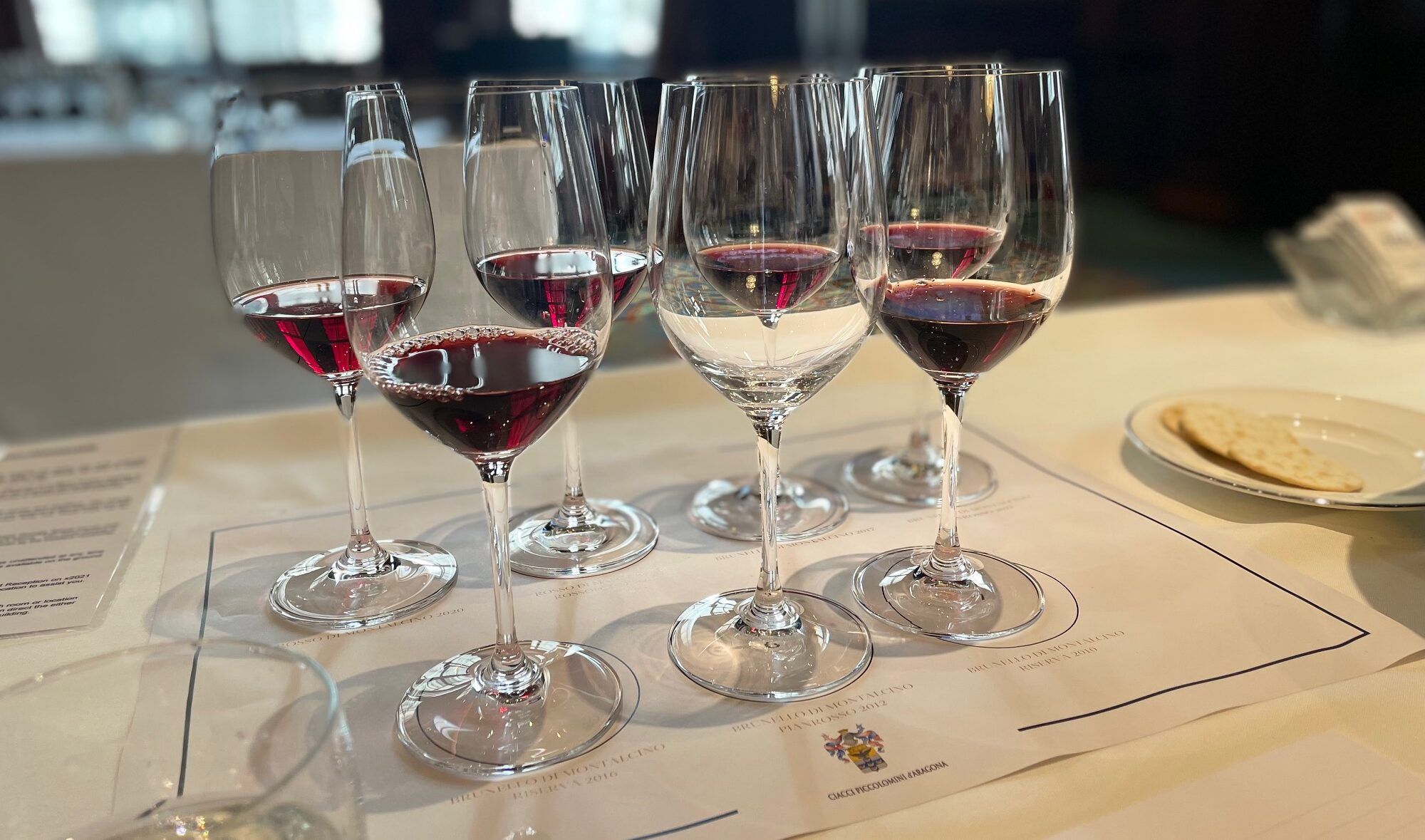“Those in the know made a beeline for the Klein Constantia Estate Riesling after some social media noise about how fantastic it was tasting. The Insta-geeks were not wrong!” Wilson writes.
Mentzendorff is – quite rightly – known as the go-to importer for fortified wine in the UK but, aside from sherry, port and myriad other stickies, its list is full of brilliant wines in the still and sparkling categories.
Visiting its recent portfolio tasting and seeing everything laid out in one place it’s clear that this is an agency which knows its customers well and cares about giving them a collection (a treasure trove, may be more accurate) of classic and out-there wines to complement its fortified offering.
From blockbuster New World labels to lesser-known but equally impressive French and Italian producers there’s a quiet confidence across the portfolio, and nothing seems out of place or superfluous.
Judging by the number of people tasting, spitting, nodding, and politely queuing for the new Bollinger release, this fat-off-the-bone approach works well.
Having tasted a fair chunk of the portfolio, below are some of the highlights, including a handful of wines tasted as part of a Ciacci Piccolomini d’Aragona producer masterclass.
Please note that Bollinger and Ayala Champagnes and the Hamilton Russell wines would have got a mention too – such was their quality on the day – but they will be featured elsewhere by The Buyer soon.
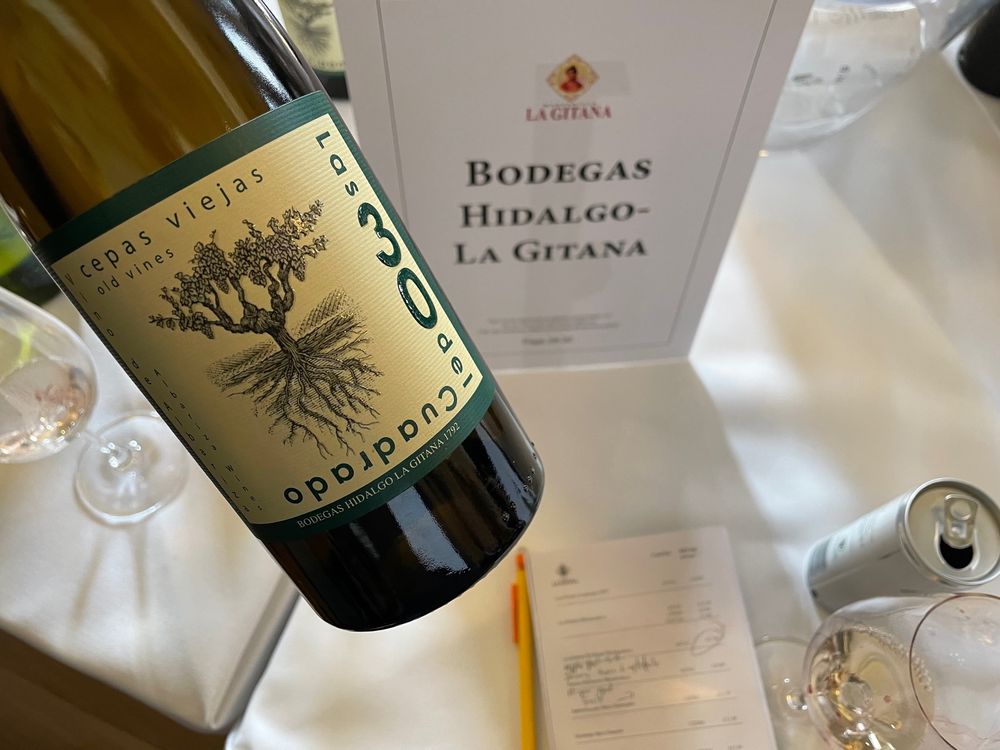
Bodegas Hidalgo, Las 30 Del Cuadrado, 2019
A rare treat this, an unfortified white wine from the Bodegas Hidalgo stable made from old vine Palomino. Fruit from 70-year-old ‘wild’ vines is fermented in former Manzanilla Sherry casks and aged on the lees for six months. The result is a clean and muscular wine that’s sappy and alive with notes of green olives, salt and creamy almonds…. all of which would make the perfect accompaniment.
Hambledon, Classic Cuvée, NV
Classy Hampshire fizz made from 2017 base wines (58% Chardonnay, 24% Pinot Meunier, 18% Pinot Noir). Disgorded September 2021 and dosed with 4.5 g/L. The three years+ on lees adds a lovely weight and crème brûlée bite to the lush, ripe fruit and green apple acidity. Delicate but confident.
Bodegas Hidalgo, La Gitana ‘En Rama’ Manzanilla, NV
The ‘en rama’ concept is to ‘taste the Sherry almost as if you had visited the bodega in Spain and dipped your glass into the barrel.’ The wine is bottled directly from the barrel then soon released making it fresher and more intense. This is the new bottling and it certainly packs a punch – there’s fresh apple peel on the nose, then salt and an array of savoury notes on the palate; nuts, cream cheese, Marmite. Long and complex, but utterly refreshing.
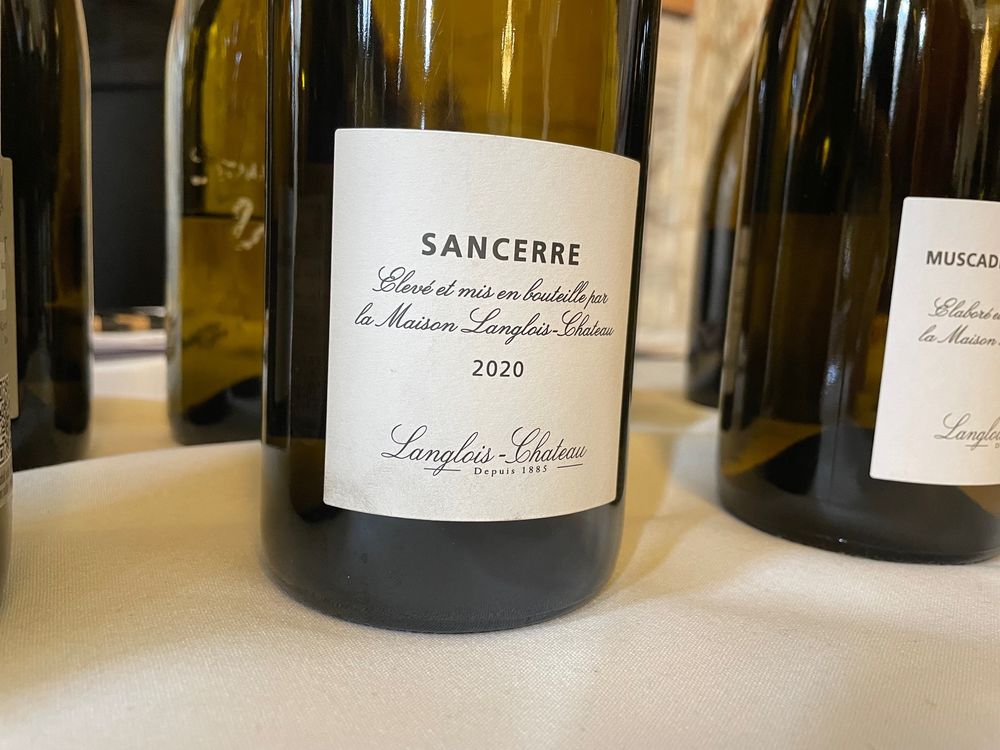
Langlois-Chateau, Sancerre, 2021
The wine was billed as a 2020 in the book and on the label, but it was the 2021 on show. This is very recently bottled and tasting divine; a ripe and sparkling (not in the effervescent sense) Sancerre which shows the Sauvignon Blanc grape in its purest light. There’s green pepper and white pepper spice, but it’s tamed by a blanket of ripe pear and nectarine fruit making it velvety and lithe. A very classy wine, which wears its lees ageing with style.
Klein Constantia, Estate Riesling, 2017
When you make one of the greatest sweet wines ever it’s easy for the rest of your cuvées to get overlooked, but those in the know made a beeline for the Klein Constantia Estate Riesling after some social media noise about how fantastic it was tasting. The Insta-geeks were not wrong! Even with five years of age on it, it was tasting seriously fresh. Lime cordial, candle wax, warm plastic carrier bag and spring flowers all hang off a stark linear acidity. Very European in style and joyful with it.
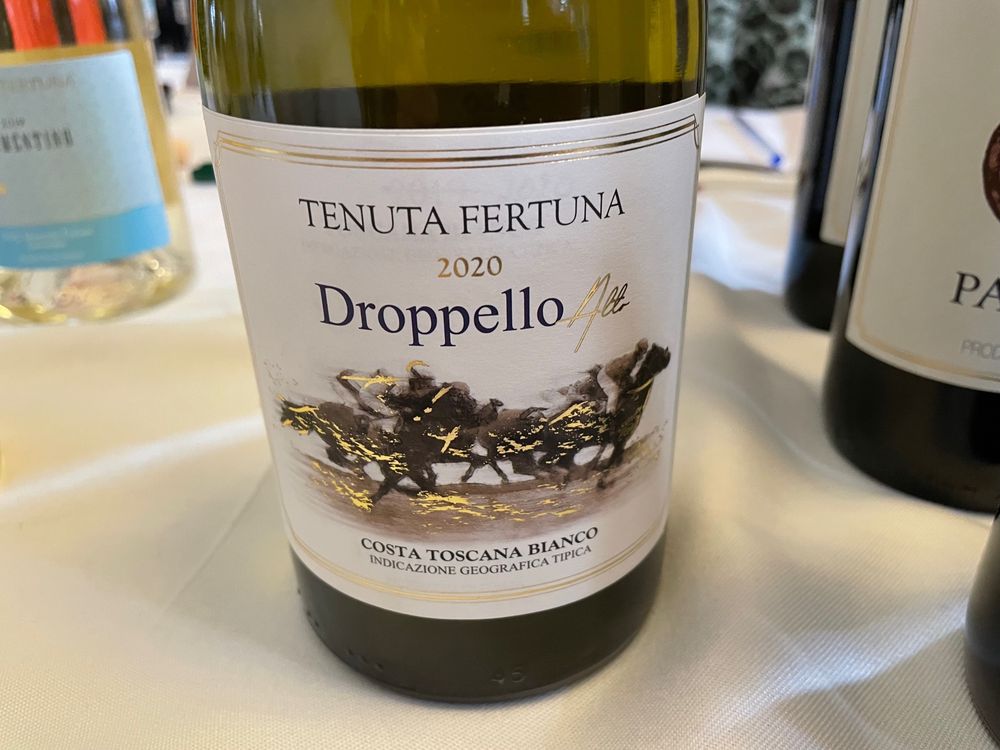
Tenuta Fertuna, Droppello Alto Bio Bianco, 2020
Apparently Droppello means ‘horse blanket’, which is interesting (every day’s a school day etc.) but that’s not the most interesting thing about this Tuscan white wine. The fact that it’s made from 100% Sangiovese is the hook. It’s an impressive wine; aged for 12 months on the lees in steel then a further six months in new French oak, it’s creamy and grippy with an intense fruit profile (greengage, red apple), a herby note and just a hint of tannin. Full and confident.
Jean-Luc Colombo, Crozes-Hermitage Les Fées Brunes, 2020
With more than 20 wines on show, Jean-Luc Colombo was run off his feet, splashing wines of every colour into glass after glass as he moved behind the table, as if on a rail like a giant table-football player. The highlight for me was this juicy, floral and sumptuous Crozes-Hermitage; packed with ripe fruit, dried herbs and spice it’s balanced and bright with just a hint of oak (it’s aged in predominantly large, old oak) and a generous warm finish.
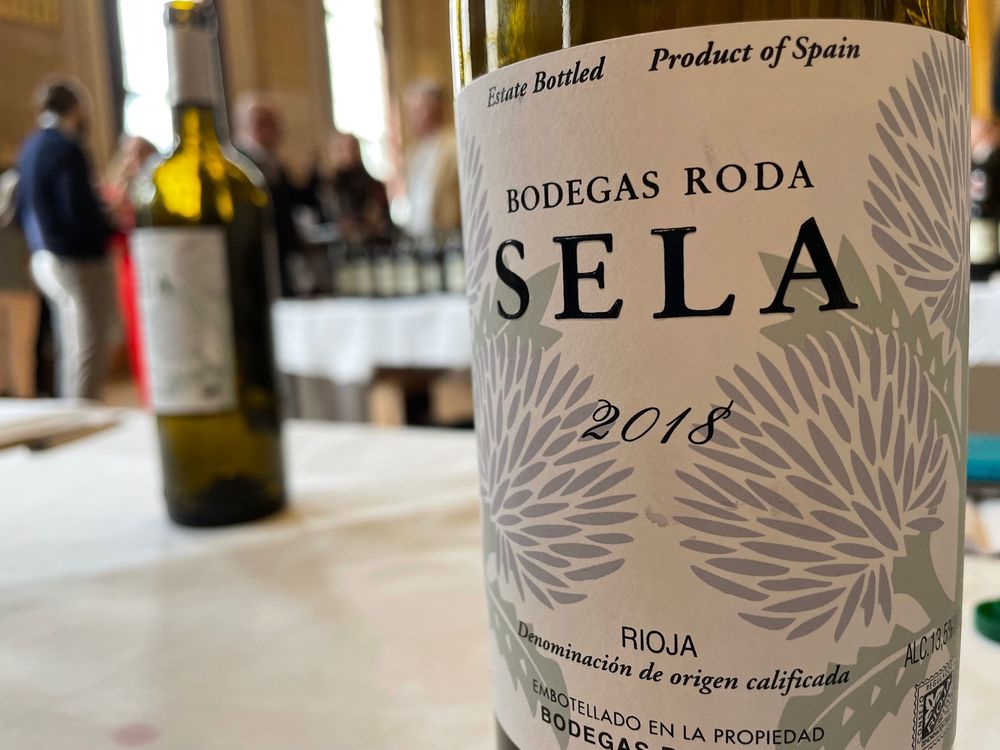
Bodegas Roda, Roda Sela, 2018
Everyone knows Roda I – and it was tasting fabulous as was the Roda Reserva – but the highlight of the Bodegas Roda table (not least for its relative value) was the Sela 2018. This is the ‘entry level’ wine in the range (RRP £20) and it was a find; floral and juicy with the full spectrum of red fruit and a nod towards some tertiary characters of earth and tobacco. So approachable and balanced, arguably the red wine of the day.
Cartuxa, Colheita Reserve Tinto, 2016
This is Mentzendorff’s first Portuguese agency which doesn’t specialise in fortified wine, and there’s a lot going for it. Cartuxa’s whites are perfumed and fresh but it’s the reds that really grab you by the lapels. All centre around a trio of grapes; Alicante Bouschet, Aragonez and Trincadeira. The Colheita Reserve Tinto sees extended maceration, 12 months maturation in vat and cask, and a minimum of nine months bottle age. It’s a structured and bold wine with smoky, meaty overtones, a rich, vibrant mid-palate and true juiciness of fruit (blackberry, mulberry). A tannic finish begs for some grilled meat to accompany it.
Ceretto, Barolo Brunate, 2017
With four wineries and 160 hectares of vineyards across Piedmont the Ceretto family produces a classic collection of Barolo and Barbaresco wines, many of which were on show. The expectedly chunky tannins were evident across the range, none-more-so than in the 2017 Barolo Brunate – this is a beast of a wine with black and blue fruit studded with burnt toast, blood, mushroom and damp soil. It’s dense, brooding and attractive, a clear stand-out.
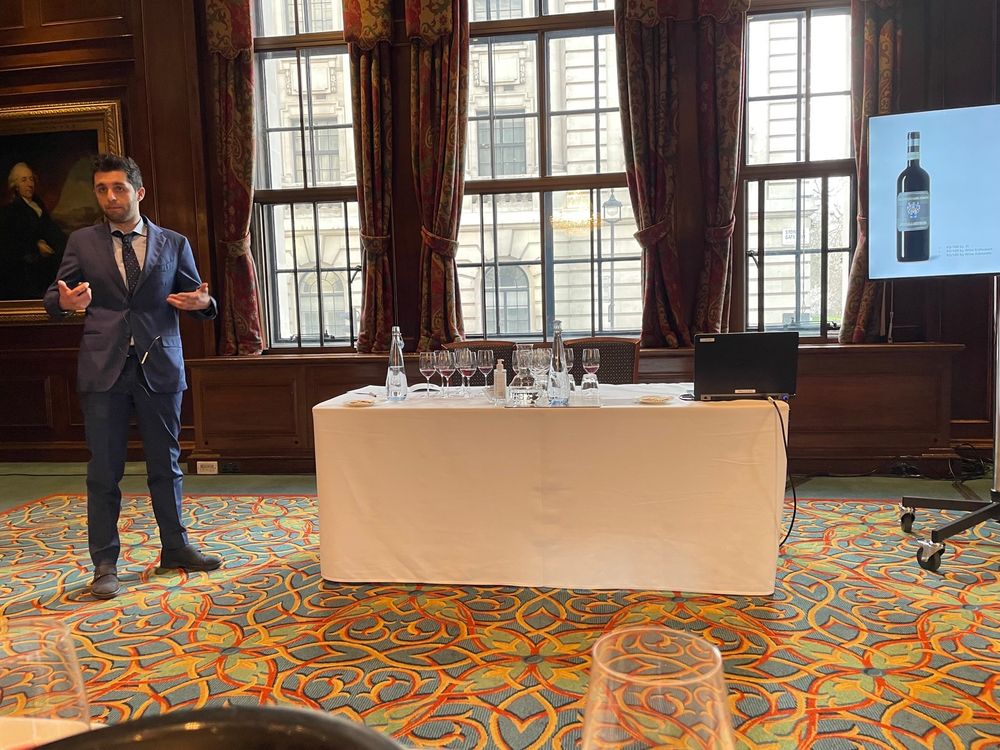
The final three wines were tasted as part of a Ciacci masterclass presented by Alex Bianchini.
Ciacci Piccolomini d’Aragona, Rosso di Montalcino, 2020
A simple but utterly delightful wine. Good growing conditions in 2020 led to this benchmark Rosso di Montalcino; a dusty nose gives way to cherry and pomegranate fruit on the nose and palate and a fresh, rounded acidity. There’s a bite, a zip of elegance here which makes it very attractive.
Ciacci Piccolomini d’Aragona, Brunello di Montalcino, 2017
Recently launched, this is Ciacci’s flagship wine and it was a pleasure to taste it alongside Alex Bianchini who oversees wine production at the estate. The Sangiovese fruit is fermented in stainless steel and glass-lined concrete, before 24+ months’ maturation in large Slavonian oak, followed by eight months in bottle. Rich and long there’s red berry, plum and black cherry fruit, and an abundance of spice (nutmeg, bay) before liquorice and shoe polish. Classy.
Ciacci Piccolomini d’Aragona, Brunello di Montalcino Pianrosso, 2012
One from the Ciacci cellars, this ‘library’ wine was a joy to taste. Still fresh almost 10 years after it was made, it has certainly softened over time into a lush, velvety smooth wine with raspberry and ripe plum fruit, a berry ice lolly acidity and a long, chewy finish.
Mentzendorff is a supplier partner of The Buyer. To discover more about them click here.
